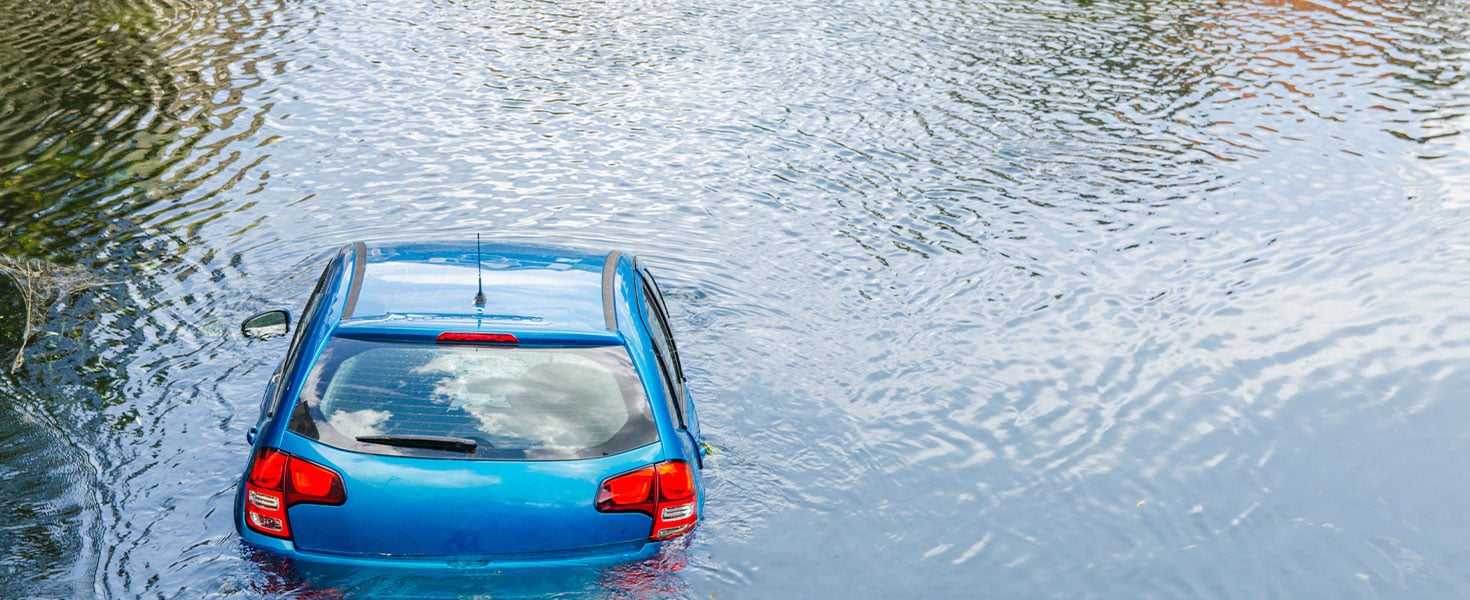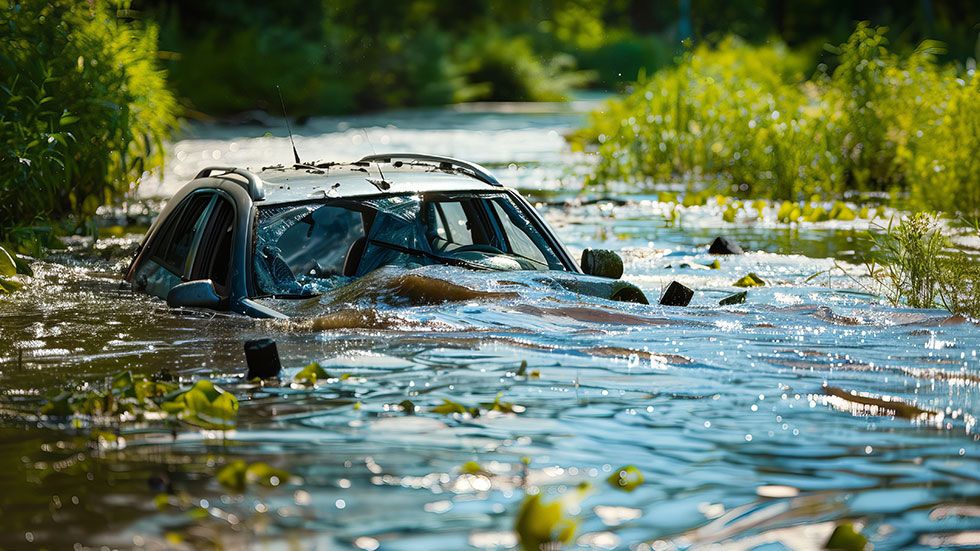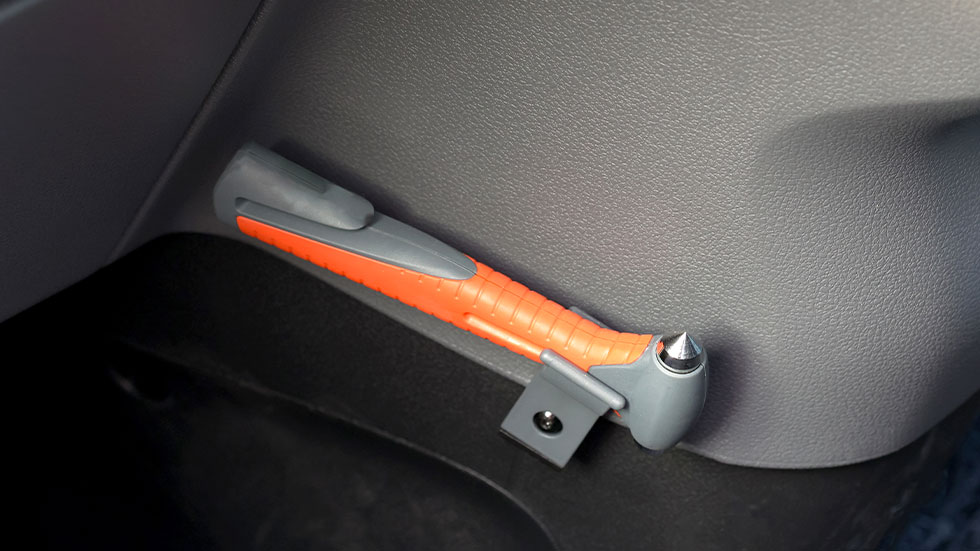How to Escape a Sinking Vehicle
Learn how to escape a sinking vehicle using a seatbelt cutter, a vehicle escape tool, and your wits


While accidents where vehicles go into water are relatively rare compared to on-road accidents, they are among the most dangerous and have the highest fatality rate with most deaths resulting from drowning versus trauma. Each year, vehicular water accidents result in around 400 deaths in North America alone and can account for up to 11% of all drownings.
The good news is that with the right preparation and thought beforehand, drivers can greatly increase their chances of survival. In this article, we’ll examine some of the facts about water accidents, dismantle dangerous fictions, and give you a way to quickly and easily stay S-U-R-E should you ever find yourself trapped.

Stay S-U-R-E, stay alive
S - Stay calm: Every second counts from the moment your vehicle enters the water. Being able to make quick, decisive, calm decisions will be critical when you need to escape a sinking vehicle. Allowing panic to set in does nothing to help and only makes you more likely to take incorrect action while burning away precious seconds.
U - Unbuckle: Removing your seatbelt, then the belts of your passengers is your top priority. You may be able to unbuckle your belt, so if it is stuck, it will need to be cut with a vehicle escape tool.
R - Roll down/break a window: Studies have shown that in most vehicles, power windows will continue to work for up to a minute after exposure to water, but once water reaches the window, the pressure may prevent windows from being able to roll down. In this case, you will need to break a side window with an escape tool.
E - Exit: With the windows down and belts unfastened, exit the vehicle and swim to safety. If you have children on board, they should be sent out first.
Understanding the facts & fiction of auto submersions
The internet may deliver us a world of information, but this information isn't always correct or safe to trust. Separating truth from fiction could save your life someday.

Learn how to break a window
While you may think you can easily break a car window with your elbow, a swift kick, or even a handy hammer-style escape tool, knowing how and which window to break can often mean the difference between life and death. The windshield, rear window, and sometimes even side windows are made from laminated safety glass. This glass is designed to protect occupants from flying glass or from being thrown out of the vehicle during a rollover. Unfortunately, laminated windows cannot be shattered like tempered glass. Be sure to research your specific vehicle windows and identify which are tempered versus laminated glass. Always try to break glass in a window's corner where it is structurally weakest. Trying to break a car window from the center will be more difficult if not impossible.
Never wait for a car to fill with water
You may find some "advice" that waiting for a sinking vehicle to fill with water will equalize the pressure and allow you to open a door to escape, but this is deadly advice, to be blunt. Even after the vehicle has completely sunk under water, pressure won't equalize instantaneously. That means this strategy would require holding your breath and executing a perfect escape to avoid drowning. It's always safest to exit the vehicle as quickly as possible.

Choose a good escape tool and keep it close
You don't want to be inside a sinking vehicle trying to locate your escape tool. You also don't want to be trying to swing a hammer-style tool through water to break a car window. Spring-loaded escape tools with a seatbelt cutter can be easily attached to a keychain or hung from a rearview mirror with a zip tie for easy access in an emergency. These tools require no strength to use and allow you to quickly pop tempered glass or slice a seatbelt.
Do not open your door
Even though one of your first steps should be to open windows, do not open your door. This will only allow more water to rush in, sinking the more rapidly. Studies have also shown that, in cases where occupants opened a door, sinking often increases water pressure so quickly that the door can be pushed shut again, trapping legs, arms or clothing in the process.
Look for bubbles if disoriented
As a vehicle sinks, it may pitch, roll or otherwise change position, sometimes multiple times. As occupants work to escape, they can become disoriented and, in the case of underwater exits, may find they can't tell which way is up. Look for bubbles and their direction of travel to find up.
While the prospect of finding yourself in a sinking vehicle may always be a nightmare for some, keeping the S-U-R-E acronym in mind and establishing a plan of action ahead of time can often make the difference between life and death. Stay S-U-R-E to stay alive!
